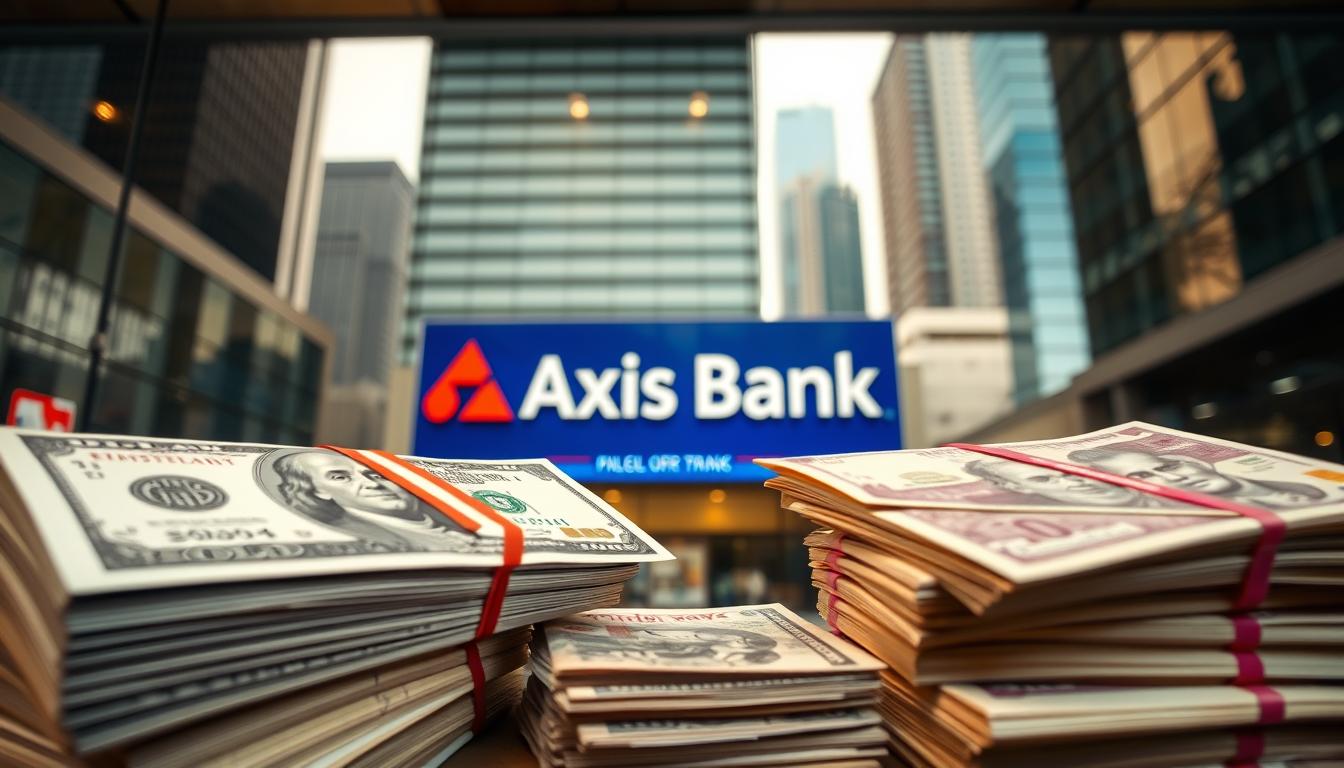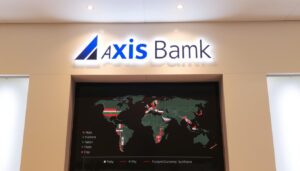Did you know that hidden fees can add up to 3% or more on international transactions? For Indian travelers and businesses, understanding these costs is crucial when converting funds. Major financial institutions play a key role in this process, offering services that come with both visible and hidden charges.
When dealing with international payments, it’s essential to compare the exchange rate offered by banks with the mid-market rate. This helps identify potential markups. Additionally, transaction fees and taxes can significantly impact the total cost.
Exploring alternative solutions and banking products can help optimize these expenses. This article dives into the details of such services and provides strategies to save on conversion costs.
Key Takeaways
- Hidden fees can increase transaction costs by up to 3%.
- Compare exchange rates with mid-market rates for better deals.
- Transaction fees and taxes add to the overall expense.
- Major financial institutions offer both visible and hidden charges.
- Explore alternative solutions to optimize conversion costs.
Understanding Axis Bank’s Currency Conversion Process
The process of converting funds internationally involves multiple steps and factors. Financial institutions like Axis Bank follow a dual conversion process. First, the foreign currency is converted into a base currency, and then it is exchanged into the local currency. This ensures accuracy and compliance with global standards.
How Axis Bank Converts USD to INR
Axis Bank uses the SWIFT network for international transactions. This ensures secure and efficient transfers, typically taking 1-3 business days. The bank also applies interbank rates, which are more favorable than retail customer rates. This helps reduce costs for clients.
RBI regulations play a significant role in shaping these transactions. They ensure transparency and protect customers from unfair practices. Additionally, correspondent banking relationships help Axis Bank offer competitive rates.
Factors Influencing Currency Conversion Rates
Several factors affect the rates offered by Axis Bank:
- Timing: Exchange rates fluctuate throughout the day. Early mornings or late evenings often yield better rates.
- Geopolitical Events: Global events like elections or economic crises can impact currency values.
- Market Demand: High demand for a currency can drive its value up or down.
“Understanding these factors can help you make informed decisions and save on conversion costs.”
By staying informed about these elements, you can optimize your international transactions and minimize unnecessary expenses.
Axis Bank Charges for Currency Conversion (USD to INR)
International transfers often come with hidden costs that can add up quickly. Understanding the breakdown of these expenses is essential for anyone sending money abroad. This section provides a detailed look at the fees and additional charges you might encounter.
Transaction Fees and Markup Rates
When converting funds, processing fees typically range from 1.25% to 2%. Additionally, an 18% GST is applied to these fees, increasing the overall cost. For example, a $1,000 transfer could incur up to $20 in processing fees plus GST.
Markup rates are another factor to consider. These rates are added to the interbank exchange rate and can vary depending on the service provider. Comparing these rates with the mid-market rate can help you identify potential savings.
Additional Charges to Watch Out For
Several other fees can impact your total expenses:
- Cross-border transfer charges: Ranging from ₹500 to ₹1,000 per transaction.
- Dynamic Currency Conversion (DCC) markups: Typically 3-5% when using cards abroad.
- Weekend/holiday surcharges: Higher fees during non-business days.
- Penalty charges: ₹500 to ₹5,000 for documentation errors.
By being aware of these costs, you can plan your transactions more effectively and avoid unexpected expenses.
How Axis Bank’s Exchange Rates Compare
Exchange rates play a crucial role in determining the cost of international transactions. Understanding how financial institutions set their rates can help you make informed decisions and save money. This section compares mid-market rates with bank exchange rates and explores the impact of dynamic currency conversion.
Mid-Market Rate vs. Bank Exchange Rate
The mid-market rate is the benchmark rate used in global financial markets. However, banks typically add a markup of 1.5% to 2.5% over this rate. For example, a ₹1 lakh transfer could incur a margin of ₹2,500 to ₹4,000. This markup is a key factor in the total cost of your transaction.
Regulatory requirements ensure some level of transparency, but it’s essential to compare rates across platforms. Real-time comparison tools can help you identify the best deals and avoid unnecessary expenses.
Impact of Dynamic Currency Conversion
Dynamic currency conversion (DCC) allows merchants to charge you in your home currency instead of the local one. While this may seem convenient, it often comes with hidden costs. For instance, a 3% fee combined with a 5.5% rate markup can result in an 8.5% total cost.
Here are some pitfalls to watch out for:
- Higher Fees: DCC typically adds 3-5% to your transaction.
- Unfavorable Rates: The exchange rate used is often less competitive.
- Lack of Transparency: Many customers are unaware of these additional costs.
“Always opt for local currency when using cards abroad to avoid DCC markups.”
By understanding these factors, you can make smarter choices and minimize unnecessary expenses during international transactions.
Optimizing International Transactions with Axis Bank
Smart strategies can significantly reduce costs when dealing with cross-border transactions. Whether you’re a frequent traveler or a business owner, understanding how to minimize fees and maximize efficiency is essential. This section provides actionable tips to help you optimize your international payments.
Tips to Minimize Conversion Charges
One effective way to reduce costs is by using Priority or Visa Signature cards. These cards often come with lower forex markups, making them ideal for international use. Additionally, consider bulk transfers instead of multiple small transactions. This approach can save on processing fees and simplify your financial management.
Timing is another critical factor. Aligning your payments with statement cycles can help avoid unnecessary interest charges. Furthermore, leveraging GST input credit on banking charges can provide additional savings. Always compare prepaid Forex cards with credit cards to determine the most cost-effective option for your needs.
Using Credit Cards Abroad
Credit cards offer convenience and security for international travelers. However, it’s essential to understand the associated fees. Dynamic Currency Conversion (DCC) can add hidden costs, so always opt for local currency when making payments abroad. This simple step can save you up to 5% on each transaction.
For high-volume clients, negotiation strategies can be beneficial. Discussing your transaction volume with your service provider may lead to reduced fees or better rates. By staying informed and proactive, you can make the most of your international financial activities.
“Always opt for local currency when using cards abroad to avoid DCC markups.”
By implementing these strategies, you can optimize your international transactions and minimize unnecessary expenses. Whether you’re traveling or conducting business, these tips will help you save time and money.
Exploring Alternatives to Traditional Bank Conversions
In today’s globalized world, traditional banking methods are no longer the only option for managing international transactions. With the rise of fintech, businesses and individuals can now access innovative solutions that offer better rates, faster processing, and greater convenience. This section explores digital wallets, multi-currency accounts, and how Karbon FX can complement your financial strategies.
Digital Wallets and Multi-Currency Solutions
Digital wallets like Wise provide multi-currency accounts that allow users to hold and manage multiple currencies in one place. These services often offer lower exchange rates, saving users between 0.5% to 1.5% compared to traditional banks. For frequent transfers, this can translate into significant savings.
Multi-currency accounts are particularly beneficial for businesses. A case study involving a ₹50 lakh corporate payment showed savings of ₹75,000 by using a hybrid model that combined traditional banking for compliance with fintech for competitive rates. These accounts also simplify financial management by providing real-time updates and seamless conversions.
How Karbon FX Can Complement Your Transactions
Karbon FX offers API integration for real-time rate comparisons, enabling users to access the best exchange rates instantly. This tool is especially useful for businesses that require frequent international transactions. By integrating Karbon FX into their financial systems, companies can optimize their currency exchanges and reduce costs.
Another advantage of Karbon FX is its compliance with RBI-approved alternative channels. This ensures that users can enjoy the benefits of fintech while adhering to regulatory requirements. A hybrid approach—using traditional banks for compliance and fintech for competitive rates—can provide the best of both worlds.
- Fintech Exchange Rate Advantages: Save 0.5% to 1.5% on conversions.
- Multi-Currency Accounts: Ideal for frequent transfers and holding multiple currencies.
- API Integration: Real-time rate comparisons for better decision-making.
- Compliance Benefits: RBI-approved channels ensure regulatory adherence.
- Hybrid Approach: Combine traditional banking with fintech for optimal results.
“By leveraging fintech solutions, businesses can achieve significant savings and streamline their international transactions.”
Exploring these alternatives can help you optimize your financial strategies, reduce costs, and enhance efficiency in managing global transactions.
Calculating the Total Cost of Currency Conversion
Understanding the total expenses involved in international money transfers requires a detailed breakdown of all components. Hidden fees, taxes, and exchange rate markups can significantly impact the final cost. By analyzing these factors, you can make informed decisions and optimize your transactions.
Understanding Hidden Fees
Hidden fees often go unnoticed but can add up quickly. These include Nostro account maintenance fees, which are charged for holding foreign currency accounts. Additionally, tax implications under Section 206C (1% TCS) may apply, further increasing the total charges.
Reconciliation challenges in multi-fee transactions can also complicate the process. For example, combining processing fees, GST, and dynamic markups can make it difficult to track the exact amount spent. Using cost comparison templates can help simplify this for both personal and business needs.
Sample Calculation for USD to INR Conversion
Let’s break down a sample calculation for converting $10,000. Assume a 1.8% fee and an exchange rate of ₹83 per USD. The formula would be: (Amount × Rate) + (Amount × Fee%) + GST.
- Amount: $10,000
- Rate: ₹83
- Fee: 1.8%
- GST: 18% on the fee
Applying this, the total charges would be ₹16,020. This includes the exchange rate markup, processing fee, and GST. Such detailed calculations help identify potential savings and avoid unexpected expenses.
“Always review the breakdown of fees and taxes to ensure transparency and minimize costs.”
By understanding these components, you can better manage your international transactions and reduce unnecessary expenses.
Security and Convenience in International Transactions
Ensuring safety and efficiency in cross-border payments is a top priority for financial institutions. With the rise of digital transactions, robust security measures are essential to protect users from fraud and ensure seamless experiences. This section explores how one leading financial institution prioritizes these aspects.
Advanced Security Measures
The institution employs cutting-edge technology to safeguard international transactions. For instance, 256-bit SSL encryption ensures that online forex activities remain secure. Two-factor authentication adds an extra layer of protection, reducing the risk of unauthorized access.
Real-time SMS alerts allow users to monitor their accounts closely. These alerts can be customized based on transaction thresholds, providing immediate notifications for any suspicious activity. Additionally, travel card emergency replacement policies ensure that users are never stranded abroad without access to funds.
Ensuring Smooth Transactions Abroad
Compliance with RBI’s Liberalized Remittance Scheme (LRS) ensures that all international transactions adhere to regulatory standards. This not only enhances security but also builds trust among users. Dispute resolution mechanisms are another key feature, with high success rates and clear timelines for resolving issues.
Here are some tips to ensure hassle-free international payments:
- Always enable two-factor authentication for added security.
- Customize SMS alerts to stay informed about account activity.
- Familiarize yourself with the bank’s emergency replacement policies for travel cards.
- Verify compliance with RBI’s LRS before initiating transactions.
“Proactive measures and advanced technology are essential for secure and efficient international transactions.”
By leveraging these services, users can enjoy peace of mind while conducting cross-border payments. Whether traveling or managing business operations, these strategies ensure a smooth and secure experience.
Frequently Encountered Challenges and Solutions
Navigating international transactions often comes with its own set of challenges. From unexpected charges to fluctuating exchange rates, these issues can complicate cross-border payments. Understanding these hurdles and knowing how to address them can make a significant difference in managing global finance effectively.
Dealing with Unexpected Charges
One of the most common issues users face is unexpected fees. These can range from penalty charges for documentation errors to unauthorized forex fees. For instance, billing disputes often arise from conflicts between Dynamic Currency Conversion (DCC) and Merchant Category Codes (MCC).
To mitigate these costs, users can explore chargeback procedures for unauthorized transactions. Additionally, filing complaints through the RBI Ombudsman process can help resolve disputes efficiently. Escrow services are another option for high-value transactions, ensuring cash is only released when conditions are met.
Handling Exchange Rate Fluctuations
Exchange rates can fluctuate significantly, impacting the total cost of transactions. Tools like Wise’s rate alerts can help users monitor changes and make informed decisions. Forward contracts are another effective strategy, allowing businesses to lock in favorable rates for future payments.
For businesses, hedge accounting strategies can provide stability in volatile markets. By understanding these tools and implementing them proactively, users can minimize risks and optimize their international transactions.
“Proactive measures and informed decisions are key to overcoming challenges in global finance.”
Conclusion
Managing international payments efficiently requires a clear understanding of costs and solutions. Total conversion costs can range from 3% to 7%, influenced by fees, taxes, and exchange rate markups. To optimize expenses, consider a hybrid approach combining traditional banking with fintech partners for competitive rates and compliance.
Emerging trends like blockchain-based forex are reshaping the landscape, offering faster and more transparent transactions. Always adhere to a compliance checklist for international transfers, ensuring adherence to RBI guidelines. Staying updated with the latest regulations is crucial for seamless cross-border payments.
For those seeking cost-effective solutions, leveraging multi-currency accounts and digital wallets can provide significant savings. By adopting these strategies, users can streamline their international transactions and minimize unnecessary expenses.







